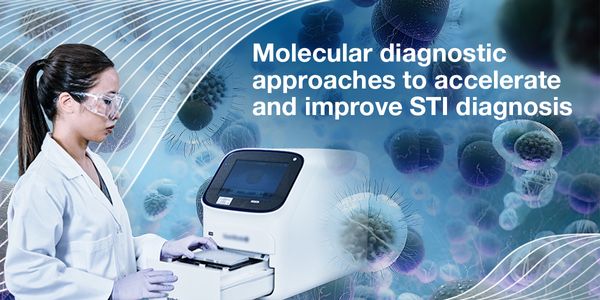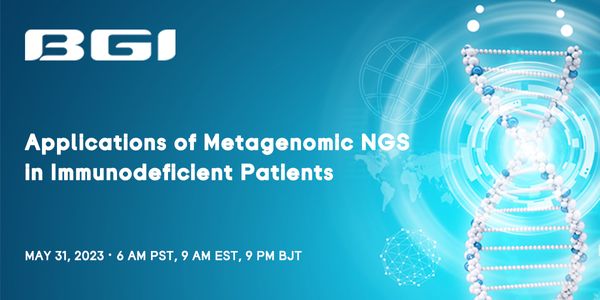Research
Research: comprises "creative and systematic work undertaken to increase the stock of knowledge, including knowledge of humans, culture and society, and the use of this stock of knowledge to devise new applications."
-
JUN 29, 2023 | 7:55 PMRNA interference (RNAi) offers a fast and easy system to study gene functions. However, the traditionally used small interfering RNAs (siRNAs) can exhibit pronounced and problematic off-targ...JUN 29, 2023 | 8:00 AMMolecular biology workflows within drug discovery and development pipelines rely on the efficient extraction and cleanup of nucleic acids. Maximizing recovery, consistency and speed is achie...JUN 28, 2023 | 8:00 AM3D morphological analysis of neurons often requires using different imaging modalities, capturing multiple types of neurons and inspecting neurons in a range of densities. These complexities...JUN 28, 2023 | 8:00 AMLaboratories performing diagnostic testing for infectious diseases have an obligation to meet the needs of multiple patient populations. With infectious disease, time it takes for reporting...JUN 27, 2023 | 11:00 AMCancer is a leading cause of death worldwide, accounting for nearly 10 million deaths in 2020, or nearly one in six deaths, according to the World Health Organization. Many cancers can be cu...JUN 27, 2023 | 10:00 AMThere is a great variability in testing for monoclonal gammopathies. During his presentation, Dr. David F. Keren, MD, Clinical Professor of Pathology at University of Michigan Health, descri...JUN 20, 2023 | 10:00 AMSpatial biology enables researchers to characterize combined molecular information and spatial...JUN 15, 2023 | 9:00 AMAdvancements in protein and gene therapy research have led to more complex modalities being developed. In addition, the desire for a deeper understanding of these molecules enhances the need...JUN 15, 2023 | 8:00 AMELISA (Enzyme-Linked Immunosorbent Assay) is a powerful and well-established method that enables researchers to detect and quantify a wide range of soluble substances, such as peptides, prot...JUN 15, 2023 | 7:00 AMLiquid biopsies represent a transformation in the management of cancer as they have the potential to detect, characterize, and monitor cancers earlier than can be achieved with conventional...JUN 15, 2023 | 10:00 AMInsights gained from studies using genome editing tools can provide a better understanding of cellular physiology, so that we can uncover answers to complex diseases and ultimately develop t...JUN 14, 2023 | 8:00 AMInsights gained from studies using genome editing tools can provide a better understanding of cellular physiology, so that we can uncover answers to complex diseases and ultimately develop t...JUN 14, 2023 | 8:00 AMInfluenza is a highly contagious respiratory illness that affects millions of people worldwide each year. The influenza virus is constantly evolving, making it difficult to predict and preve...JUN 13, 2023 | 10:00 AMAchieving consistent AAV quantification with the QuantStudio Absolute Q AutoRun dPCR Suite Accurate quantification of AAV vectors is crucial for quality control and timely decision-making du...Speaker: Kimberly Gomez , Himani Patel , Raquel Muñoz-Garcia, PhDSponsored By: Thermo Fisher ScientificJUN 13, 2023 | 2:00 PMPrompt and early diagnosis of sexually transmitted infections (STIs) is important to enable appropriate treatment and help prevent further transmission. Clinical testing labs require STI tes...Speaker: Barbara Van Der Pol, PhD, M.P.H. , Teddie Proctor, MSN, RN , Bina ShanbhagSponsored By: Thermo Fisher ScientificJUN 08, 2023 | 9:00 AMIn the emergency department, distinguishing between bacterial and viral infections can be challenging, leading to inappropriate use of antibiotics that may contribute to the development of b...JUN 07, 2023 | 9:00 AMJoin us for an introduction to the Deepcell Platform, an instrument that combines advances in high-resolution imaging, deep learning foundation models to illuminate morphology in all its dim...JUN 06, 2023 | 9:00 AMTransmission electron microscopy reveals the architecture of cells at nanometer resolution, but chemical fixation severely warps their native structure. The true ultrastructure of cells can...MAY 31, 2023 | 11:00 AMDate: May 31, 2023 Time: 11:00am (PDT), 2:00pm (EDT), 8:00pm (CET) Single-cell genomics has facilitated the understanding of mechanisms involved in various biological processes such as tumor...MAY 31, 2023 | 10:00 AMDate: May 31, 2023 Time: 10:00am (PDT), 1:00pm (EDT), 5:00pm (CEST) Bloodstream infections (BSIs) are defined as a systemic infection resulting from the presence of viable microorganisms in...MAY 31, 2023 | 8:00 AMDo you have questions about Tissue Processing? Robin Fitzl, Senior Application Specialist at Leica Biosystems, has the answers! As part of her popular “Lessons from the Laboratory&rdqu...MAY 31, 2023 | 6:00 AMAlthough metagenomic next-generation sequencing (mNGS) is increasingly used in clinical microbiological diagnosis, especially for rare or complicated infectious diseases, the applications of...MAY 25, 2023 | 10:00 AMFree light chains, kappa (κ) lambda (λ), are produced by plasma cells and known to be an important marker in patients with Multiple Myeloma and AL Amyloidosis. The precursor con...MAY 24, 2023 | 8:00 AMRecent advances in multi-omic approaches, including genomics, transcriptomics, and proteomics, enable a more comprehensive description of the tumor. This promises to accelerate the developme...
JUN 29, 2023 | 7:55 PM
RNA interference (RNAi) offers a fast and easy system to study gene functions. However, the traditionally used small interfering RNAs (siRNAs) can exhibit pronounced and problematic off-targ...
JUN 29, 2023 | 8:00 AM
Molecular biology workflows within drug discovery and development pipelines rely on the efficient extraction and cleanup of nucleic acids. Maximizing recovery, consistency and speed is achie...
JUN 28, 2023 | 8:00 AM
3D morphological analysis of neurons often requires using different imaging modalities, capturing multiple types of neurons and inspecting neurons in a range of densities. These complexities...
JUN 28, 2023 | 8:00 AM
Laboratories performing diagnostic testing for infectious diseases have an obligation to meet the needs of multiple patient populations. With infectious disease, time it takes for reporting...
JUN 27, 2023 | 11:00 AM
Cancer is a leading cause of death worldwide, accounting for nearly 10 million deaths in 2020, or nearly one in six deaths, according to the World Health Organization. Many cancers can be cu...
JUN 27, 2023 | 10:00 AM
There is a great variability in testing for monoclonal gammopathies. During his presentation, Dr. David F. Keren, MD, Clinical Professor of Pathology at University of Michigan Health, descri...
JUN 20, 2023 | 10:00 AM
Spatial biology enables researchers to characterize combined molecular information and spatial...
JUN 15, 2023 | 9:00 AM
Advancements in protein and gene therapy research have led to more complex modalities being developed. In addition, the desire for a deeper understanding of these molecules enhances the need...
JUN 15, 2023 | 8:00 AM
ELISA (Enzyme-Linked Immunosorbent Assay) is a powerful and well-established method that enables researchers to detect and quantify a wide range of soluble substances, such as peptides, prot...
JUN 15, 2023 | 7:00 AM
Liquid biopsies represent a transformation in the management of cancer as they have the potential to detect, characterize, and monitor cancers earlier than can be achieved with conventional...
JUN 15, 2023 | 10:00 AM
Insights gained from studies using genome editing tools can provide a better understanding of cellular physiology, so that we can uncover answers to complex diseases and ultimately develop t...
JUN 14, 2023 | 8:00 AM
Insights gained from studies using genome editing tools can provide a better understanding of cellular physiology, so that we can uncover answers to complex diseases and ultimately develop t...
JUN 14, 2023 | 8:00 AM
Influenza is a highly contagious respiratory illness that affects millions of people worldwide each year. The influenza virus is constantly evolving, making it difficult to predict and preve...
JUN 13, 2023 | 10:00 AM
Achieving consistent AAV quantification with the QuantStudio Absolute Q AutoRun dPCR Suite Accurate quantification of AAV vectors is crucial for quality control and timely decision-making du...
Speaker:
Kimberly Gomez
, Himani Patel
, Raquel Muñoz-Garcia, PhD
Sponsored By: Thermo Fisher Scientific
JUN 13, 2023 | 2:00 PM
Prompt and early diagnosis of sexually transmitted infections (STIs) is important to enable appropriate treatment and help prevent further transmission. Clinical testing labs require STI tes...
Speaker:
Barbara Van Der Pol, PhD, M.P.H.
, Teddie Proctor, MSN, RN
, Bina Shanbhag
Sponsored By: Thermo Fisher Scientific
JUN 08, 2023 | 9:00 AM
In the emergency department, distinguishing between bacterial and viral infections can be challenging, leading to inappropriate use of antibiotics that may contribute to the development of b...
JUN 07, 2023 | 9:00 AM
Join us for an introduction to the Deepcell Platform, an instrument that combines advances in high-resolution imaging, deep learning foundation models to illuminate morphology in all its dim...
JUN 06, 2023 | 9:00 AM
Transmission electron microscopy reveals the architecture of cells at nanometer resolution, but chemical fixation severely warps their native structure. The true ultrastructure of cells can...
MAY 31, 2023 | 11:00 AM
Date: May 31, 2023 Time: 11:00am (PDT), 2:00pm (EDT), 8:00pm (CET) Single-cell genomics has facilitated the understanding of mechanisms involved in various biological processes such as tumor...
MAY 31, 2023 | 10:00 AM
Date: May 31, 2023 Time: 10:00am (PDT), 1:00pm (EDT), 5:00pm (CEST) Bloodstream infections (BSIs) are defined as a systemic infection resulting from the presence of viable microorganisms in...
MAY 31, 2023 | 8:00 AM
Do you have questions about Tissue Processing? Robin Fitzl, Senior Application Specialist at Leica Biosystems, has the answers! As part of her popular “Lessons from the Laboratory&rdqu...
MAY 31, 2023 | 6:00 AM
Although metagenomic next-generation sequencing (mNGS) is increasingly used in clinical microbiological diagnosis, especially for rare or complicated infectious diseases, the applications of...
MAY 25, 2023 | 10:00 AM
Free light chains, kappa (κ) lambda (λ), are produced by plasma cells and known to be an important marker in patients with Multiple Myeloma and AL Amyloidosis. The precursor con...
MAY 24, 2023 | 8:00 AM
Recent advances in multi-omic approaches, including genomics, transcriptomics, and proteomics, enable a more comprehensive description of the tumor. This promises to accelerate the developme...























